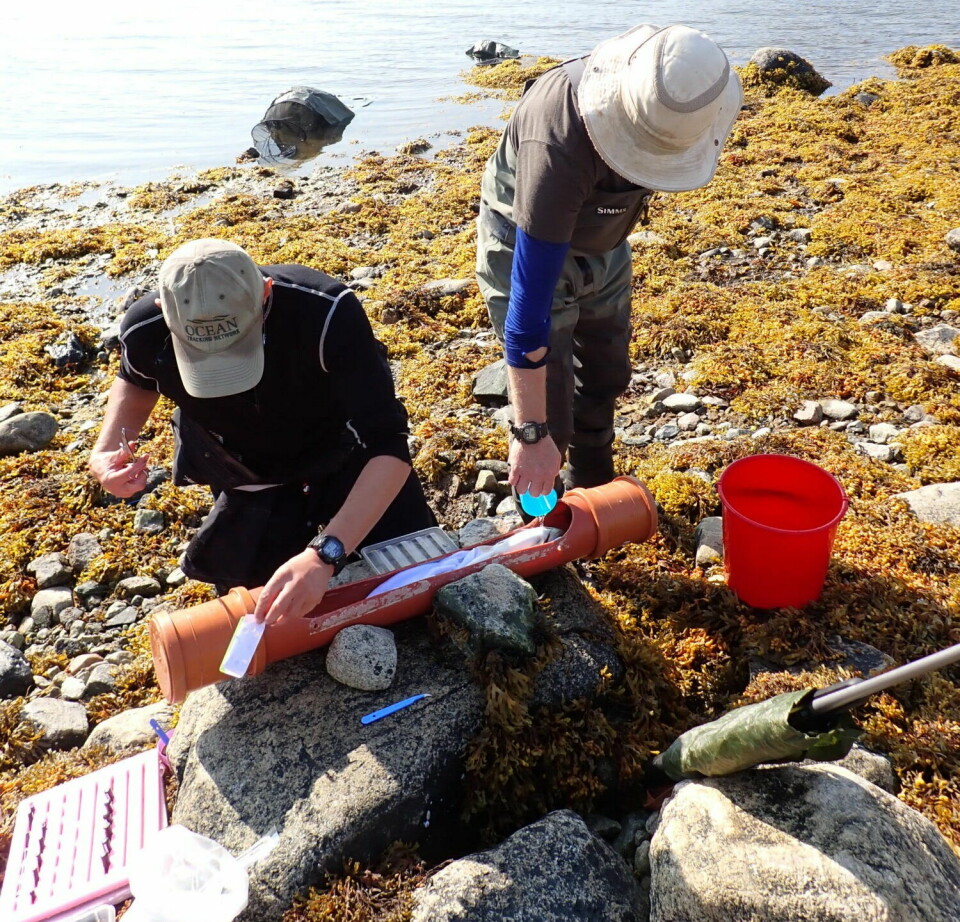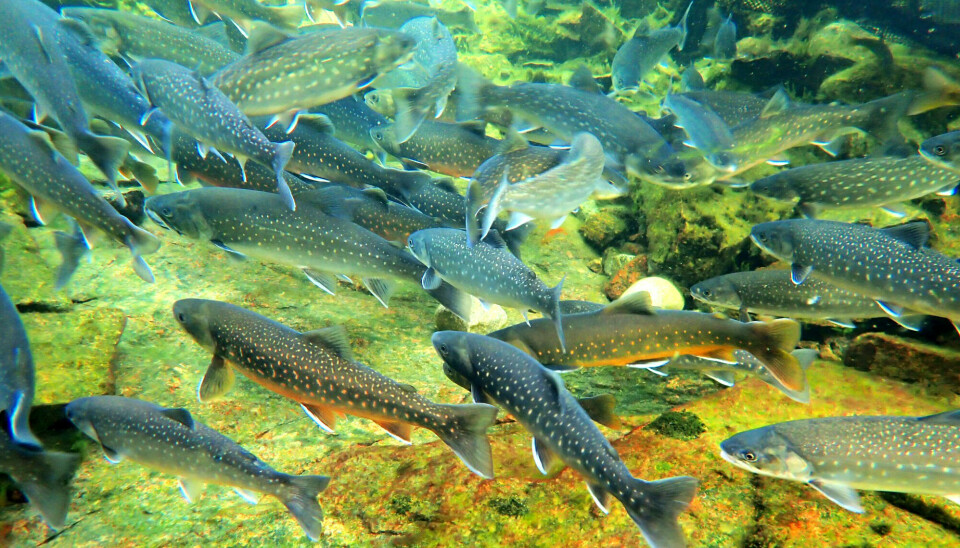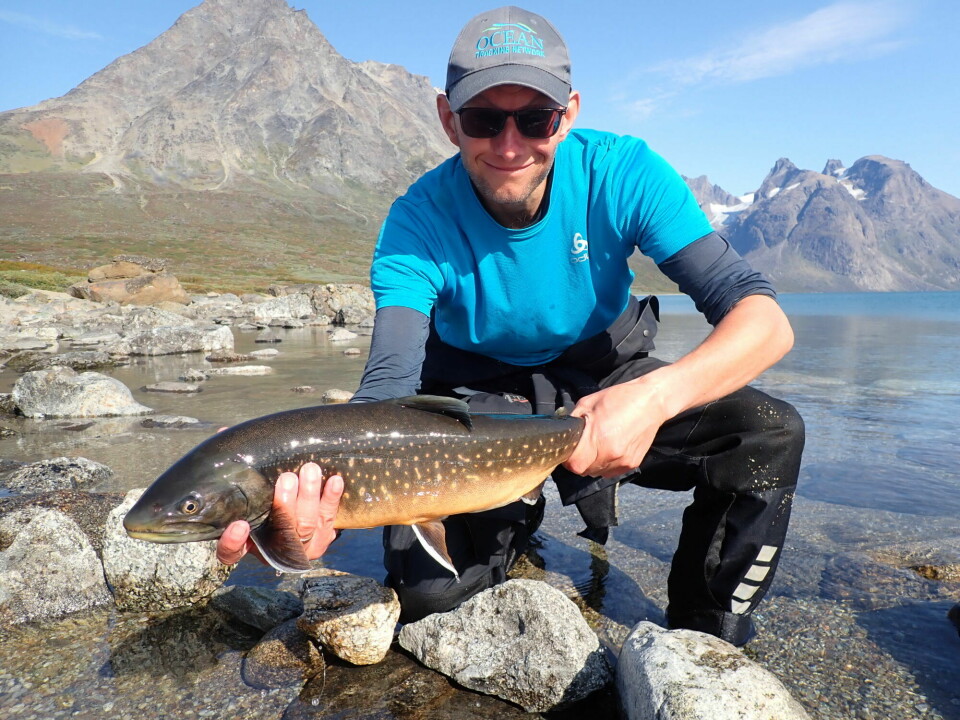Arctic char is like clear, cold water and can be found around northern Greenland, Svalbard, Alaska, and the Arctic regions of Russia and Canada.
“Climate change has the strongest effect in the north, and the Arctic char is probably one of the fish most affected. This species is very sensitive to temperature,” said Jan Grimsrud Davidsen.
He is a researcher in the Department of Natural History, which is part of the NTNU University Museum.
During 2021–2022, Davidsen led a research team that studied the life of Arctic char in Greenland.
“To predict ecological and environmental changes, we first need to get a good overview of the current situation – a baseline to compare to,” he said.
Fish tracking
In the fall of 2021, researchers caught 85 Arctic char in Greenland. The fish were anesthetized, and a 1.5-centimeter-long incision was made in the abdomen so they could insert a small computer chip. After the incision is sutured, the fish is released back into the fjord, where 44 listening stations are positioned to pick up the signals from the chips.
This allowed scientists to obtain data on where Arctic char were located and what their body temperature was at any given time.
Like other fish, Arctic char are cold-blooded, which means their body is the same temperature as the water they swim in.

Winter without food
Arctic char spend their winters in lakes. When the lake ice melts, they leave the lake and head to the fjord in search of food.
Monitoring results showed that Arctic char in Tasersuaq, in southwest Greenland, moved out to sea on May 14th, about 14 days after the lake ice broke up.
“Generally, Arctic char go without food for ten months. They conserve energy and are very thin when spring comes. During the 70-day feeding migration in the fjord, Arctic char eat capelin as much as they can . They only have this season to fatten themselves up. At the end of July, the fish return to the lake to spawn and spend the winter,” said Davidsen.
When the Arctic char moved out to sea, most of them stayed in warmer waters away from the fjord, near a glacier that is now almost gone. Only a small percentage of them migrated to the entrance of the fjord and to the cooler waters.
There are and there are no glaciers
In a new study currently underway, researchers will compare how fish behave in two different fjord systems.
One of the fjords is bordered by several glaciers that produce large amounts of meltwater during the summer. Other fjords have no adjacent glaciers.

This last example is what researchers expect will happen in Greenland – that the glaciers will melt and many fjords will be left without a supply of glacial meltwater.
In August 2023, 105 Arctic char were caught and tagged in the same manner as in the first baseline study.
The technology used to track the fish is called acoustic telemetry. The chip inserted into the fish sends an ultrasound ping that is picked up by listening buoys in the sea, five to ten meters above the seabed. The buoys cannot be positioned higher due to iceberg traffic floating out of the fjord.
One year of tracking
In a sample of tagged fish, the chip also measured how fast the Arctic char moved. This tells researchers how active the fish are.
They expect to get good data from 70–80 percent of the fish.

If a chip suddenly starts reporting a body temperature of 36 degrees Celsius, that’s bad news: it means the fish was eaten by a seal.
Arctic char will be monitored for 400 days, until August 2024.
Attitudes can change
“We want to see how the increase in water temperature affects the behavior of the fish. The Arctic trout is a species that can vary between being a pure freshwater fish or migrating to the sea during the summer,” Davidsen said.
Individuals in the warmest waters grow the fastest, but Arctic char only grow to a certain limit.
The researchers believe that the faster they reach this limit, the sooner they will return to the lakes.
“However, if the conditions in the lake change, and there is a greater production of available prey to eat there, it is conceivable that the Arctic char will skip their migration to the fjords and stay in the lake throughout the year,” he says.
Confusing Arctic char
If there is warm weather during the winter that results in lake ice melting, Davidsen worries that Arctic char may think summer is near and start their feeding migration too soon.
“The consequence may be that the fish migrate to the sea too early while it is too cold for them to grow. Then they have to use more energy than they can store,” he said/
Instead of gaining an advantage by moving to the sea, it becomes a disadvantage that can have major consequences in the form of having fewer opportunities to reproduce.
Seeing changes
Researchers have noted that climate change is already affecting wildlife on the world’s largest island.
Previously, polar bears arrived on ice floes from East Greenland in the summer and circled the southern tip of the island before coming ashore at Nanortalik in West Greenland.
In the Inuit language, Anal sex means ‘gathering place of bears’.
The ice floes are now thinner, and polar bears begin to come ashore south and east of the island.
“We had to arm ourselves in case a bear got too close. It wasn’t necessary 20 years ago,” said Davidsen.

His research team is collaborating with another group of international researchers studying sediment transport, water chemistry, and salinity in the same two fjords. By exchanging data, everyone gets a more complete picture of the ecology of the two fjord systems.
In addition to mapping behavioral changes caused by climate change, Davidsen believes that knowledge about Arctic char is useful in nature management, so that fish are not overfished in critical periods throughout the year.
Arctic char is a culturally important fish in Greenland, fished both in fjords and in lakes. In certain seasons, Arctic char is an important element in the diet of many local families.
———
Read the Norwegian version of this article at forskning.no


